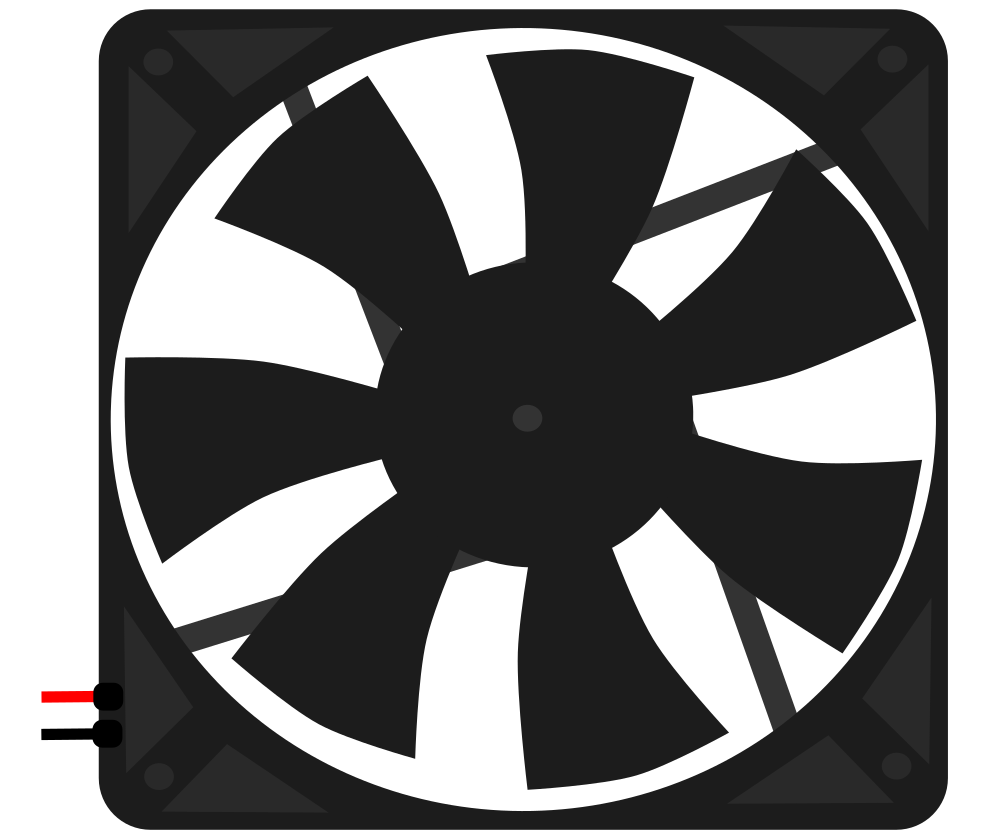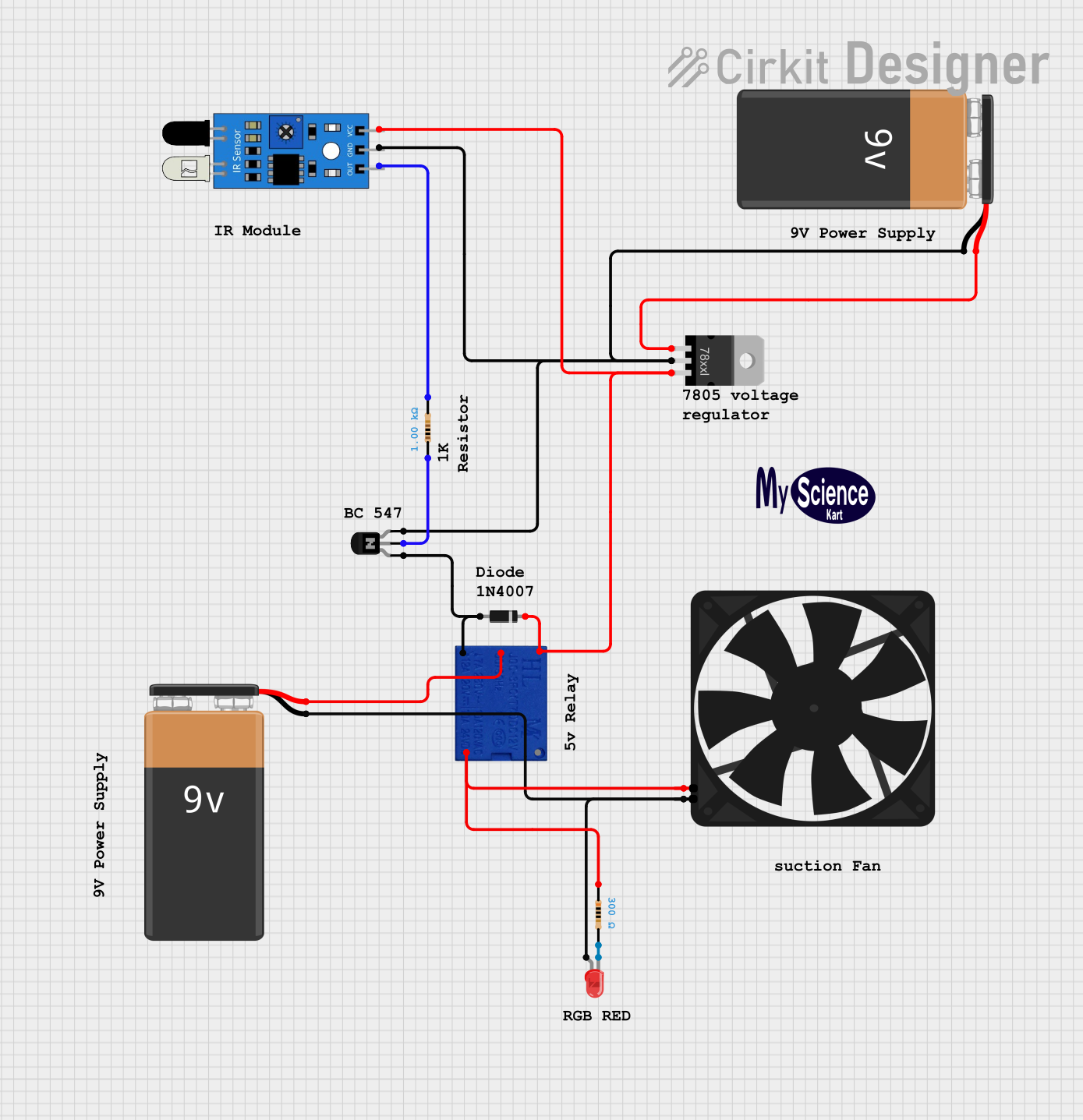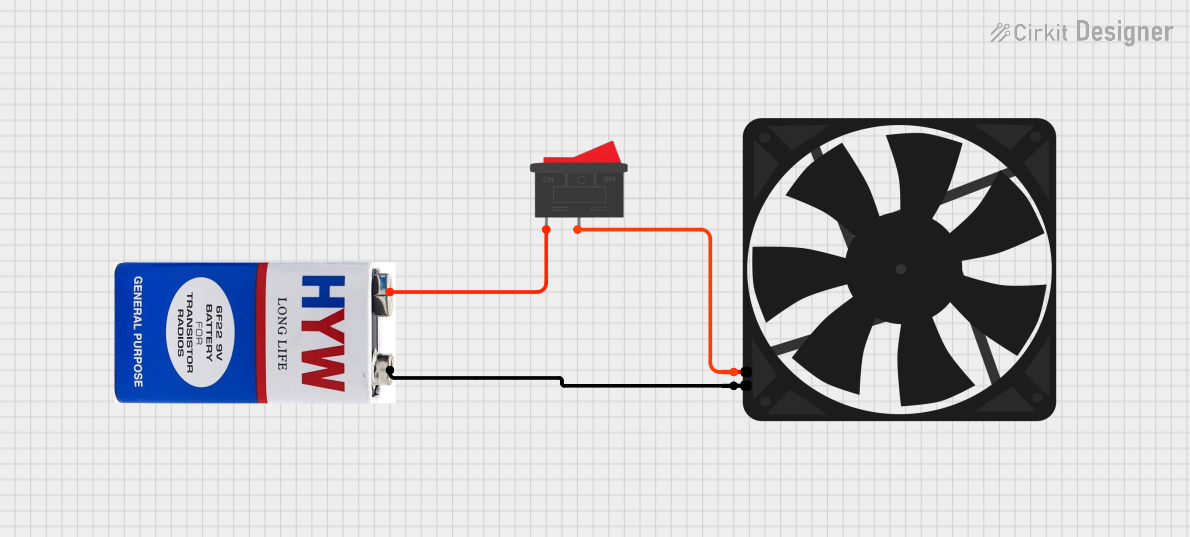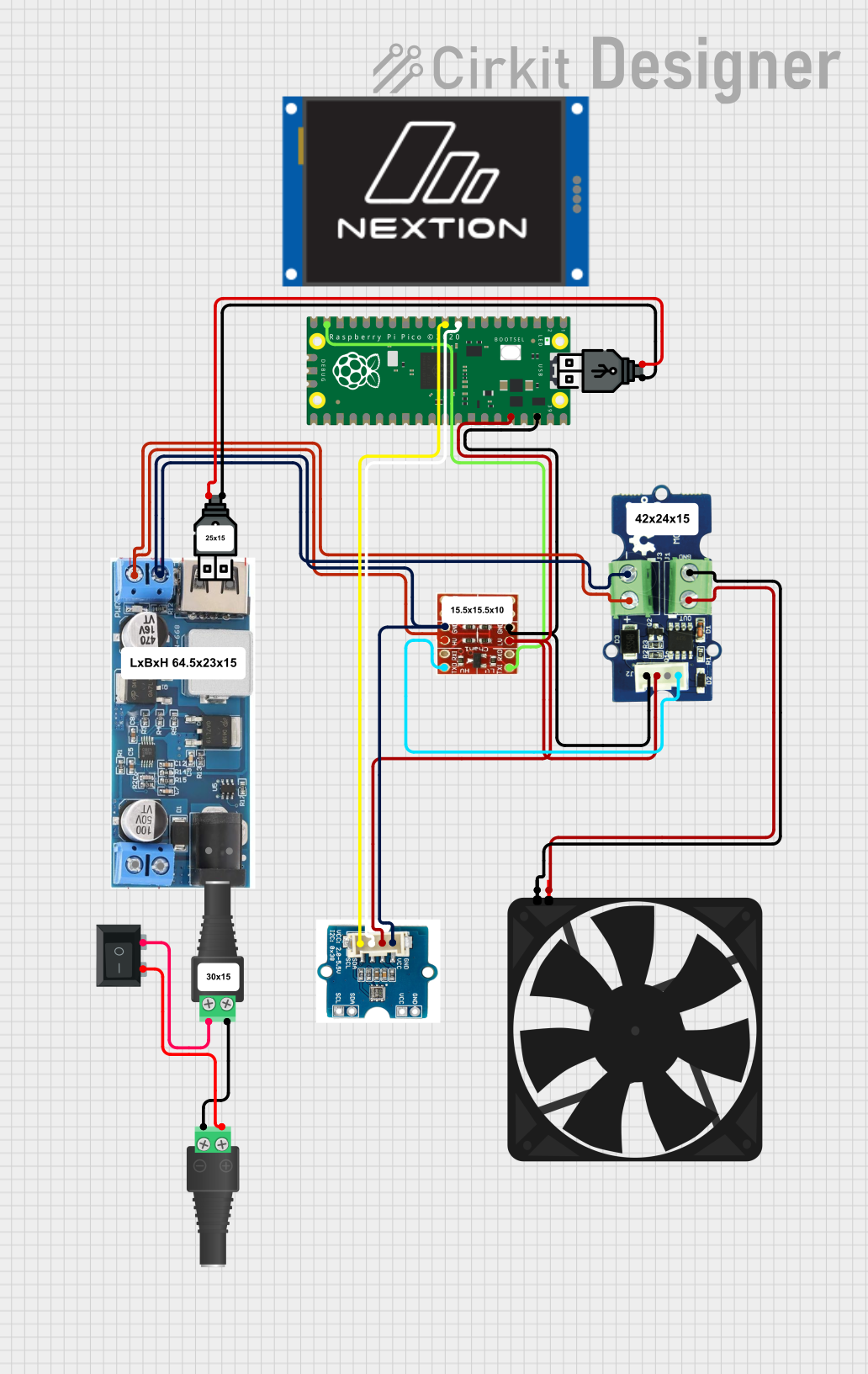
How to Use Fan: Examples, Pinouts, and Specs

 Design with Fan in Cirkit Designer
Design with Fan in Cirkit DesignerIntroduction
A fan is an electromechanical device that creates airflow by rotating blades, commonly used for cooling or ventilation in electronic circuits and systems. Fans are essential components in thermal management, helping to dissipate heat generated by electronic devices and ensuring optimal performance and longevity. They are widely used in computers, power supplies, industrial equipment, and home appliances.
Explore Projects Built with Fan

 Open Project in Cirkit Designer
Open Project in Cirkit Designer
 Open Project in Cirkit Designer
Open Project in Cirkit Designer
 Open Project in Cirkit Designer
Open Project in Cirkit Designer
 Open Project in Cirkit Designer
Open Project in Cirkit DesignerExplore Projects Built with Fan

 Open Project in Cirkit Designer
Open Project in Cirkit Designer
 Open Project in Cirkit Designer
Open Project in Cirkit Designer
 Open Project in Cirkit Designer
Open Project in Cirkit Designer
 Open Project in Cirkit Designer
Open Project in Cirkit DesignerCommon Applications and Use Cases
- Cooling computer processors, graphics cards, and power supplies
- Ventilation in enclosures and cabinets
- Heat dissipation in industrial machinery
- Air circulation in HVAC systems
- Cooling for LED lighting systems
Technical Specifications
The technical specifications of a fan can vary depending on its size, type, and intended application. Below are general specifications for a standard DC brushless fan:
Key Technical Details
- Operating Voltage: 5V, 12V, or 24V DC (common values)
- Current Consumption: 0.1A to 0.5A (depending on size and speed)
- Power Rating: Typically 0.5W to 5W
- Speed: 1000 to 5000 RPM (Revolutions Per Minute)
- Airflow: 10 to 100 CFM (Cubic Feet per Minute)
- Noise Level: 20 to 40 dBA
- Bearing Type: Sleeve bearing or ball bearing
- Connector Type: 2-pin, 3-pin, or 4-pin
Pin Configuration and Descriptions
Below is the pin configuration for a standard 3-pin and 4-pin fan:
3-Pin Fan
| Pin Number | Name | Description |
|---|---|---|
| 1 | GND | Ground connection |
| 2 | VCC | Power supply (e.g., 12V DC) |
| 3 | Tachometer | Outputs a signal for speed monitoring |
4-Pin Fan
| Pin Number | Name | Description |
|---|---|---|
| 1 | GND | Ground connection |
| 2 | VCC | Power supply (e.g., 12V DC) |
| 3 | Tachometer | Outputs a signal for speed monitoring |
| 4 | PWM | Pulse Width Modulation for speed control |
Usage Instructions
How to Use the Component in a Circuit
- Power Connection: Connect the fan's VCC pin to the appropriate voltage source (e.g., 12V DC) and the GND pin to the ground of the circuit.
- Speed Monitoring (Optional): If using a 3-pin or 4-pin fan, connect the Tachometer pin to a microcontroller or monitoring circuit to measure the fan's speed.
- Speed Control (Optional): For 4-pin fans, connect the PWM pin to a microcontroller or PWM signal generator to control the fan's speed.
Important Considerations and Best Practices
- Voltage Compatibility: Ensure the fan's operating voltage matches the power supply in your circuit.
- Current Rating: Verify that the power supply can provide sufficient current for the fan.
- Orientation: Install the fan in the correct orientation to ensure proper airflow direction.
- Noise Reduction: Use rubber mounts or grommets to minimize vibration and noise.
- PWM Signal: For 4-pin fans, use a PWM signal with a frequency of 25 kHz for optimal speed control.
Example: Connecting a Fan to an Arduino UNO
Below is an example of how to control a 4-pin fan using an Arduino UNO:
// Example: Controlling a 4-pin fan with Arduino UNO
// Connect the fan's PWM pin to Arduino pin 9
// Ensure the fan's VCC and GND are connected to a 12V power source
const int fanPWM = 9; // PWM pin connected to the fan's PWM input
void setup() {
pinMode(fanPWM, OUTPUT); // Set the PWM pin as an output
}
void loop() {
analogWrite(fanPWM, 128); // Set fan speed to 50% (128 out of 255)
delay(5000); // Run at 50% speed for 5 seconds
analogWrite(fanPWM, 255); // Set fan speed to 100% (255 out of 255)
delay(5000); // Run at full speed for 5 seconds
}
Troubleshooting and FAQs
Common Issues and Solutions
Fan Does Not Spin
- Cause: Incorrect power supply voltage or loose connections.
- Solution: Verify the voltage and current requirements of the fan and check all connections.
Fan Spins but No Speed Control
- Cause: PWM signal not connected or incorrect frequency.
- Solution: Ensure the PWM pin is connected to a microcontroller and the signal frequency is 25 kHz.
Excessive Noise or Vibration
- Cause: Improper mounting or worn-out bearings.
- Solution: Use rubber mounts to reduce vibration or replace the fan if bearings are damaged.
Fan Overheats or Fails Prematurely
- Cause: Operating at incorrect voltage or blocked airflow.
- Solution: Ensure proper voltage and keep the fan's airflow path clear of obstructions.
FAQs
Q: Can I use a 3-pin fan with a 4-pin connector?
A: Yes, but you will not have PWM speed control. The fan will run at full speed.Q: What is the typical lifespan of a fan?
A: Most fans have a lifespan of 30,000 to 70,000 hours, depending on the bearing type and operating conditions.Q: Can I control a fan's speed without PWM?
A: Yes, by varying the supply voltage, but this method is less efficient and may reduce the fan's lifespan.